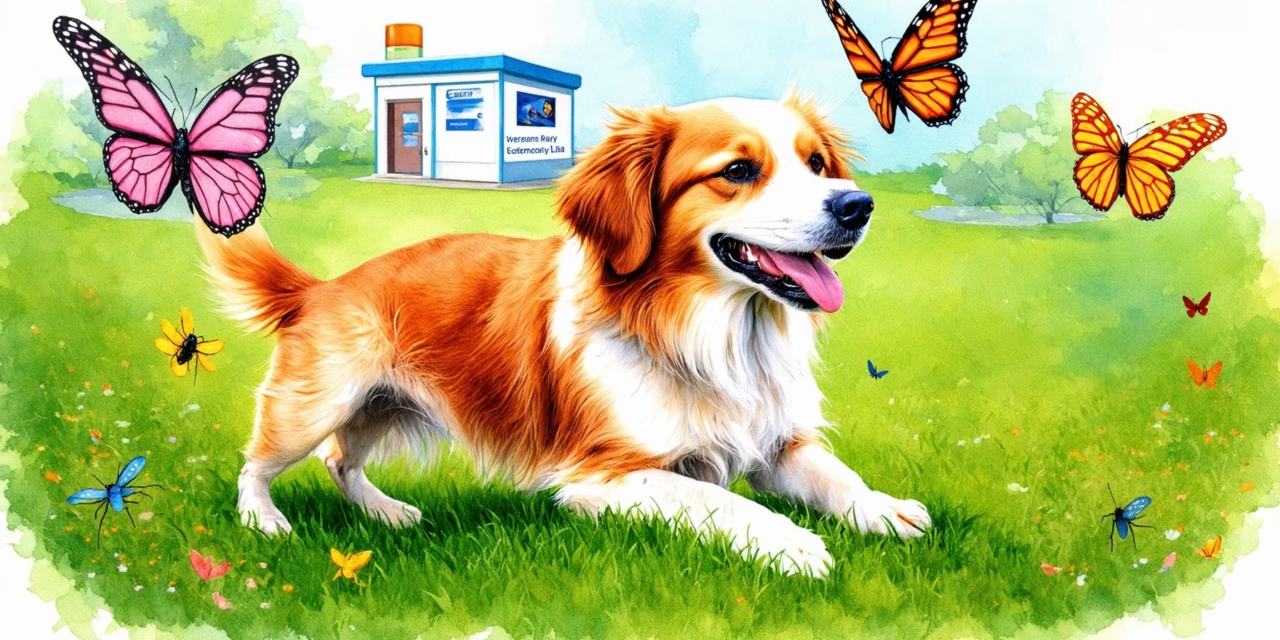Key Takeaways
- Capstar for dogs is a fast-acting flea treatment, effectively killing adult fleas within 30 minutes.
- Its efficacy lasts approximately 24 hours, requiring daily administration for persistent flea issues.
- Combining Capstar with long-term flea prevention methods enhances overall effectiveness and prevents reinfestation.
- Consulting with a veterinarian is crucial to ensure safe and appropriate use based on your dog’s weight and health status.
- Common side effects include vomiting and diarrhea, which are typically mild and temporary.
- Regular environmental management, such as vacuuming and using flea sprays, is essential for comprehensive flea control.
Welcome to our Comprehensive Guide to Capstar for Dogs, where we delve into everything you need to know about this effective flea treatment. If you’re a dog owner seeking a reliable solution to combat fleas, understanding Capstar for dogs is essential. In this article, we will explore critical aspects such as how long Capstar lasts, its mechanism of action, and whether it truly eliminates fleas or merely makes them jump off. We will also provide insights from veterinarians on Capstar’s efficacy and discuss its role in flea prevention. Additionally, we will address common concerns regarding side effects and how to manage them effectively. Whether you’re considering Capstar for your dog or looking for alternatives, this guide aims to equip you with all the necessary information to make an informed decision. Join us as we navigate through the world of Capstar flea medicine and uncover the best practices for keeping your furry friend flea-free.
Understanding Capstar’s Duration
Capstar, also known as nitenpyram, is a fast-acting oral medication specifically formulated to eliminate adult fleas on dogs. The duration of its effectiveness is approximately 24 hours, meaning that while it provides rapid relief from flea infestations, it does not offer long-term protection. To maintain a flea-free environment for your dog, Capstar should be administered daily or in conjunction with a longer-lasting flea preventative, such as topical treatments or collars that can provide ongoing protection for weeks or months. This combination approach is crucial, as Capstar does not kill flea eggs or larvae, which can lead to reinfestation.
It’s important to consult with a veterinarian before starting any flea treatment regimen to ensure the safety and health of your pet. According to the American Veterinary Medical Association (AVMA), effective flea control often requires an integrated approach that includes environmental management and regular treatment. For more comprehensive flea management strategies, consider resources from the Centers for Disease Control and Prevention (CDC) and the AVMA, which provide guidelines on preventing flea infestations and maintaining your dog’s overall health.
Factors Affecting Capstar’s Efficacy
Several factors can influence the efficacy of Capstar for dogs. These include the dog’s weight, age, and overall health, as well as the severity of the flea infestation. For instance, dogs that are underweight or have compromised immune systems may not respond as effectively to the treatment. Additionally, environmental factors such as the presence of flea eggs and larvae in the home can impact the overall success of flea control efforts.
It’s also essential to consider the timing of Capstar administration. Administering Capstar when fleas are most active can enhance its effectiveness. Regularly treating your dog with Capstar, combined with other preventive measures, can help ensure a more comprehensive approach to flea control. For further insights on pet health and treatments, explore our blog on pet health and treatments.

How Long Does Capstar Last for a Dog?
Understanding the duration of Capstar’s effectiveness is crucial for pet owners seeking immediate relief from flea infestations. Capstar (nitenpyram) is designed to provide rapid action against adult fleas, killing them within 30 minutes of administration. However, the effects of Capstar do not last indefinitely. Typically, Capstar remains effective for about 24 hours, after which it is essential to consider additional flea control measures to prevent reinfestation.
Understanding Capstar’s Duration
Capstar is an effective oral flea treatment that specifically targets adult fleas on dogs. While it works quickly to eliminate fleas, it is important to note that Capstar does not affect other life stages of fleas, such as eggs, larvae, or pupae. This means that while Capstar will eliminate the adult fleas currently on your pet, it does not prevent reinfestation from flea eggs or larvae that may be present in the environment.
To ensure comprehensive flea control, it is recommended to combine Capstar with a broader flea management strategy. This may include:
- Environmental Treatment: Vacuuming carpets, furniture, and pet bedding regularly can help remove flea eggs and larvae. Consider using flea sprays or foggers that target all life stages of fleas in your home.
- Preventive Medications: After using Capstar, consider using a monthly flea preventive treatment that kills fleas at all life stages, such as topical treatments or oral medications containing ingredients like fipronil or imidacloprid.
- Regular Grooming: Regularly grooming your pet with a flea comb can help catch any fleas before they become a larger problem.
- Consulting a Veterinarian: For persistent flea issues, consulting a veterinarian can provide tailored advice and treatment options based on your pet’s specific needs.
For more detailed information on flea control and treatment options, you can refer to resources from the American Veterinary Medical Association (AVMA) and the Centers for Disease Control and Prevention (CDC).
Factors Affecting Capstar’s Efficacy
Several factors can influence how effectively Capstar works for your dog. These include:
- Weight of the Dog: Capstar dosage is determined by the weight of your dog. Ensure you administer the correct dosage based on your dog’s weight to maximize effectiveness.
- Severity of Infestation: In cases of severe flea infestations, additional treatments may be necessary to fully eradicate fleas from your pet and home.
- Environmental Conditions: Fleas thrive in warm, humid environments. Maintaining a clean and dry living space can help reduce flea populations.
- Concurrent Treatments: If your dog is receiving other medications or treatments, these may interact with Capstar and affect its efficacy.
Understanding these factors can help you optimize the use of Capstar for your dog’s flea treatment. For more insights on Capstar and other flea treatments, check out our blog on pet health and treatments.
How Long Does Capstar Last for a Dog?
Understanding the duration of Capstar’s effectiveness is crucial for pet owners seeking immediate relief from flea infestations. Capstar, containing the active ingredient nitenpyram, is designed to kill adult fleas quickly, but its effects are temporary. Typically, Capstar starts working within 30 minutes, eliminating fleas within a few hours. However, the medication’s efficacy lasts for about 24 hours. This rapid action is beneficial for dogs experiencing discomfort due to fleas, but it is important to note that Capstar does not provide long-term protection against future infestations.
Understanding Capstar’s Duration
Capstar’s duration of effectiveness is a key factor for pet owners. After administration, the Capstar flea tablets begin to work swiftly, targeting adult fleas. Within 24 hours, most fleas will be eliminated, but any newly hatched fleas will not be affected. Therefore, while Capstar is an excellent short-term solution for immediate relief, it should be part of a broader flea control strategy. For ongoing prevention, consider combining Capstar with other treatments, such as topical solutions or long-lasting oral medications.
Factors Affecting Capstar’s Efficacy
Several factors can influence how long Capstar lasts and its overall effectiveness:
- Dog Size and Weight: The dosage of Capstar varies based on the dog’s weight. Ensuring the correct dosage is crucial for optimal results. For example, Capstar dosage for dogs is tailored to different weight categories.
- Flea Life Cycle: Capstar primarily targets adult fleas. If your dog is exposed to environments with high flea populations, new fleas may infest your pet shortly after treatment, necessitating additional preventative measures.
- Concurrent Treatments: Using Capstar alongside other flea treatments can enhance its effectiveness. Consult your veterinarian for recommendations on the best combination of products for your dog’s specific needs.
For more insights on flea management and treatment options, visit PetMD for trusted pet health information.
What are the side effects of Capstar?
Understanding the side effects of Capstar for dogs is crucial for pet owners considering this flea treatment. While Capstar (nitenpyram) is generally safe and effective, like any medication, it can cause adverse reactions in some dogs. Here are the common side effects to be aware of:
- Vomiting: Some dogs may experience vomiting shortly after taking Capstar. This is often mild and temporary.
- Diarrhea: Loose stools can occur, but they typically resolve quickly.
- Loss of Appetite: A decrease in appetite may be observed, which usually returns to normal after a short period.
- Restlessness: Some dogs may exhibit signs of restlessness or hyperactivity.
- Allergic Reactions: Although rare, some dogs may have an allergic reaction, which could manifest as itching, swelling, or difficulty breathing. If this occurs, immediate veterinary attention is necessary.
It’s essential to monitor your dog after administering Capstar flea tablets and consult your veterinarian if you notice any concerning symptoms. For a comprehensive overview of pet medications and their effects, you can refer to PetMD.
Managing Side Effects: What to Watch For
To ensure your dog’s safety while using Capstar, here are some tips for managing potential side effects:
- Observe Your Dog: Keep a close eye on your pet for the first few hours after administration to catch any adverse reactions early.
- Hydration: Ensure your dog has access to fresh water, especially if they experience vomiting or diarrhea.
- Consult Your Vet: If side effects persist or worsen, reach out to your veterinarian for advice. They may recommend adjusting the dosage or switching to a different flea treatment.
- Combination Treatments: Consider using Capstar in conjunction with a monthly flea prevention product for better overall flea management. This approach can minimize the need for frequent Capstar doses and reduce the risk of side effects.
For more information on safe flea treatments, visit ASPCA for resources on pet care and medication safety.

How Often Do You Repeat Capstar?
Understanding the appropriate frequency for administering Capstar for dogs is crucial for effective flea control. Capstar® (nitenpyram) is a fast-acting oral flea treatment that provides rapid relief from fleas, but it is not a long-term solution. Therefore, knowing how often to repeat the dosage can help maintain your dog’s comfort and health.
Recommended Dosage and Frequency
The recommended dosage of Capstar for dogs is typically based on their weight. For dogs weighing between 2-25 lbs, a single Capstar flea tablet is sufficient. For dogs over 25 lbs, a higher dosage may be necessary. It is essential to follow the instructions on the packaging or consult with your veterinarian for the correct dosage tailored to your dog’s specific needs.
Capstar can be administered daily if necessary, especially in cases of severe flea infestations. However, it is important to note that while Capstar kills adult fleas quickly, it does not prevent future infestations. Therefore, it is often recommended to use Capstar in conjunction with a long-term flea prevention strategy, such as topical treatments or flea collars.
Capstar Dosage Chart for Different Dog Sizes
- 2-25 lbs: 1 tablet (11.4 mg nitenpyram)
- Over 25 lbs: 1 tablet (57 mg nitenpyram)
For puppies and kittens over 4 weeks of age, Capstar can also be used, but always consult your veterinarian for the appropriate dosage. Monitoring your pet after administration is vital, as some dogs may experience side effects. For more information on the side effects of Capstar, refer to the official Capstar product page.
By understanding the proper dosage and frequency of Capstar, you can effectively manage your dog’s flea problem while ensuring their overall well-being. For further insights on pet health treatments, explore our blog on pet health and treatments.
How often do you repeat Capstar?
Recommended Dosage and Frequency
Capstar® (nitenpyram) is an effective oral flea treatment for pets, specifically designed to eliminate adult fleas quickly. A single dose of Capstar can kill adult fleas on your dog within 30 minutes. If your dog becomes re-infested with fleas, you can administer another dose as often as once per day. This flexibility allows for a rapid response to flea infestations, making Capstar a valuable tool in your pet care arsenal. It is crucial to follow the recommended dosage guidelines to avoid any adverse effects. Capstar is generally safe for use in dogs over 4 weeks of age and weighing at least 2 pounds.
Capstar Dosage Chart for Different Dog Sizes
When administering Capstar for dogs, it’s essential to consider the weight of your pet to ensure proper dosing. Here’s a simple dosage chart for Capstar:
– **Dogs 2-25 lbs**: One 11.4 mg Capstar flea tablet.
– **Dogs 26-50 lbs**: One 57 mg Capstar flea tablet.
– **Dogs 51-100 lbs**: One 114 mg Capstar flea tablet.
For dogs over 100 lbs, consult your veterinarian for appropriate dosing. Always ensure that you are using the correct dosage based on your dog’s weight to maximize the effectiveness of the treatment while minimizing the risk of side effects. For more information on pet health and treatments, visit our blog on [pet health and treatments](https://wellnesscoachingforlife.com/category/blog/).
Capstar for Dogs Dosage
Proper Dosage Guidelines for Capstar
When administering Capstar for dogs, it is crucial to follow the recommended dosage guidelines to ensure safety and effectiveness. The standard dosage of Capstar (nitenpyram) is based on the dog’s weight:
- For dogs weighing 2-25 lbs: 11.4 mg (one tablet)
- For dogs weighing 26-50 lbs: 57 mg (one tablet)
- For dogs weighing over 50 lbs: 114 mg (one tablet)
Capstar is typically given as a single dose, and its effects can be seen within 30 minutes. It is important to note that Capstar is not a long-term flea prevention solution but rather a quick-acting treatment that kills adult fleas on contact.
Capstar Dosage for Puppies and Kittens
Capstar is safe for use in puppies and kittens over 4 weeks of age. The dosage remains the same as for adult dogs, based on weight. For Capstar for puppies, ensure that the weight is accurately assessed to avoid underdosing or overdosing. Always consult with a veterinarian before administering Capstar to young animals to confirm it is appropriate for their health status.
For more information on pet health and treatments, visit our blog on pet health and treatments.













